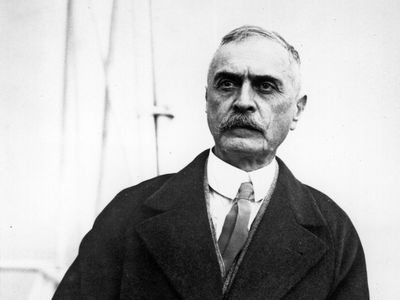
Karl Landsteiner was an Austrian American pathologist who discovered the major blood groups in 1900. His other works related to blood have made blood transfusion a safe medical practice. Karl Landsteiner was born in Vienna in 1868. Landsteiner studied medicine at the University of Vienna, graduating in 1891. The next five years. Landsteiner worked with notable scientists such as Arthur Hantzsch, Emil Fischer and Eugen Bamberger to gain knowledge of chemistry. In 1897, he returned to the University of Vienna, where he pursued his interest in the emerging field of immunology. In 1900, Landsteiner published a paper attributing agglutination, a clumping reaction in red blood cells, to immunity. Though scientists knew about agglutination, which occurs when the blood of one person is brought into contact with that of another, the underlying mechanism of this phenomenon was not understood. Landsteiner discovered that this was due to immunological reaction that occurs when antibodies are produced by the host against donated blood cells. Landsteiner observed that antigens on the outside of blood cells differed between individuals. This led Landsteiner to identify three such antigens, which he labelled A, B, and C (later changed to O). A fourth blood type, later named AB, was identified by one of his students in 1902.
Landsteiner also found out that blood transfusion between persons with the same blood group did not lead to the destruction of blood cells. Based on his findings, the first successful blood transfusion was performed in New York in 1907. In 1930 Landsteiner was awarded the Nobel Prize in Physiology or Medicine in recognition of these achievements. He is, in fact, recognised as the father of transfusion medicine Landsteiner also discovered other blood factors during his career-the M. N. and P factors, which he identified in 1927 with Philip Levine, and the Rhesus (Rh) system, in 1940 with Alexander Wiener.
Discovery of Polio virus
In 1908, Karl Landsteiner and Erwin Popper announced that the infectious agent in polio was a virus. Landsteiner also helped identify the microorganisms responsible for syphilis.
He received the Aronson Prize in 1926. He was posthumously awarded the Lasker Award in 1946.
Picture Credit : Google




